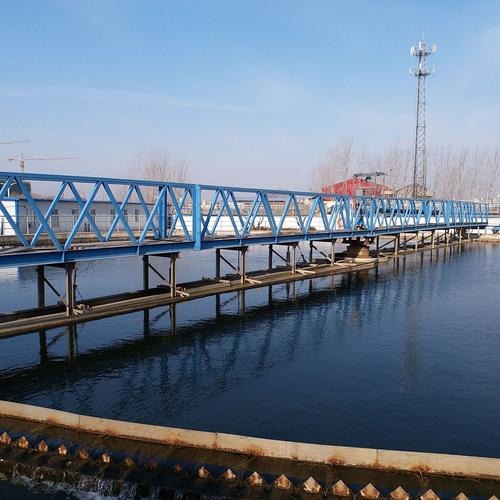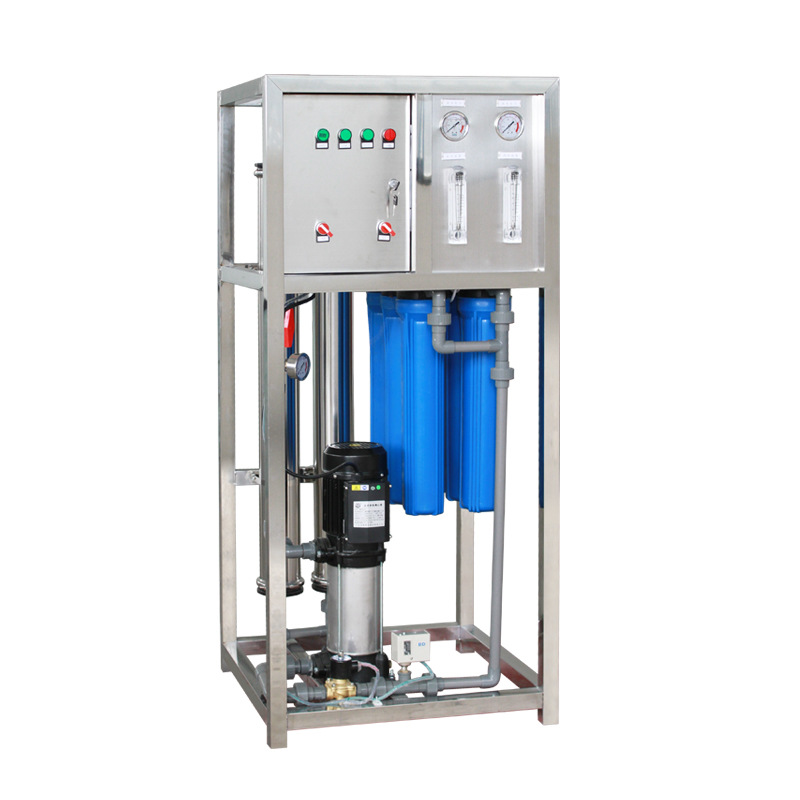1. How to clean the RO membrane?
Taking reasonable preventive measures can reduce the degree of membrane element contamination, but it is impossible to completely eliminate membrane contamination.
1.1 When does the RO membrane need to be cleaned?
★Water output decreased by about 15%
★The pressure difference between each section of the system has increased significantly
★The quality of produced water has obviously declined (not too obvious)
1.2 RO membrane cleaning principles
Multi-stage system cleaning to prevent cross contamination
1.3 Cleaning equipment
(1) Cleaning water tank: corrosion resistant
Material: Polypropylene (PP), Glass Fiber Reinforced Plastic (FRP)
Volume: membrane shell volume + pipeline volume * 20% margin
For example, 8-inch membrane ~32L/pc, 4-inch membrane ~8L/pc
(2) Cleaning the water pump
Material:316L
Flow rate: single 8-inch membrane shell, 6~9m3/h
Lift: 15~40m
Commonly used vertical pumps, cleaning water pumps are not often used, and the lifespan requirement is not high. The main consideration is the floor space.
(3) Cleaning the filter:
Material:316L
Flow rate: Matching with cleaning water pump
Filter element: PP cotton melt-blown filter element, large-flux folded filter element
1.4 Cleaning Agents
CaCO3:0.2%(W) HCl
CaSO4、BaSO4 :0.1%(W) NaOH
Metal oxide: 1.0% (W) Na2S2O4
Sludge: 0.1% (W) NaOH
Microbial film: 0.1% (W) NaOH
Silica scale: 0.1% (W) NaOH
Organic matter: 0.1% (W) NaOH, 0.2% (W) HCI
1.5 RO reverse osmosis membrane cleaning process
(1) Preparation of cleaning solution
★Take out the membrane element, analyze the cause of contamination, and formulate the cleaning solution
★ Clean the water tank and add product water and chemicals
★ Turn on the cleaning water pump and open the liquid circulation valve
★Heating liquid medicine
(2) Low flow input cleaning fluid
★Replace the raw water in the membrane element with lower pressure
★After replacing the raw water, the liquid medicine circulates back to the cleaning water tank
(3) Soaking membrane elements
★Stop the cleaning water pump
★The membrane element is soaked for about 1 hour
★For stubborn pollutants, soak for 10~15 hours
(4) Large flow circulation
★ Turn on the cleaning water pump
★Large flow to flush away the pollutants
(5) Flushing membrane elements
★Turn on the flushing pump
★ Use produced water to flush out the cleaning fluid in the system
2. How to disinfect the RO membrane system?
When the raw water is surface water or recycled water, biological contamination is the most common and serious problem of the reverse osmosis system. The membrane elements need to be regularly sterilized.
2.1 Disinfection agents and procedures
(1) Use alkaline cleaning fluid to clean the sediment in the system
(2) Use acidic cleaning solution to remove metal oxides on the surface of membrane elements
(3) Use 0.2% hydrogen peroxide solution and circulate for 20 minutes
(4) Soak in 0.2% hydrogen peroxide solution for 2 to 12 hours
(5) Rinse the system with product water
3. Cleaning of specific pollutants
If the pollutant composition can be accurately analyzed, specific formulas and cleaning steps can be used in a targeted manner, such as the following specific pollutants:
3.1 Cleaning sulfate scale
Sulfate scale is a type of membrane contaminant that is very difficult to clean. If sulfate scale is not discovered in the early stage, the possibility of membrane system performance recovery is extremely low. When sulfate scale is generated for more than one week, replacing the element may be a better choice.
Cleaning solution composition: 0.1% (wt) NaOH, 1.0% (wt) Na4-EDTA, PH12, maximum temperature 30°C
3.2 Cleaning carbonate scale
Carbonate scale is relatively easy to clean, and the membrane element can mostly restore its original performance. You can discuss the formula to prepare the cleaning solution and clean it according to the steps. Cleaning solution composition: 0.2% (wt) HCI pH2, maximum temperature 45℃, 1.0% (wt) Na2S2O4
3.3 Cleaning Iron Contamination
The content of iron ions in sewage is relatively high, which will cause iron contamination of membrane elements. Cleaning liquid composition: 1.0% (wt) Na2S2O4, pH 5, maximum temperature 30℃, 2.0% (wt) citric acid
3.4 Cleaning organic contamination
For organic matter, such as humic acid, flocculants, oil and other pollutants. Cleaning liquid composition: first use 0.1% (w) NaOH, pH12, maximum temperature 30°C for cleaning, then use 0.2% (wt) HCI, pH2, maximum temperature 45°C for cleaning.



生化膜反应器12-scaled.jpg)



